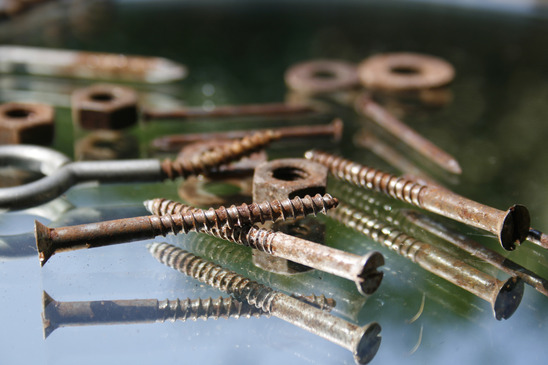 Your mold maintenance strategy should include rust prevention. If you do not use the right methods to prevent your tooling and mold from rust, you may as well put paid to your manufacturing process. Once rust affects your molds and tooling, it will be quite expensive to get rid of. And this is one expense that’s unnecessary if you have the right mold maintenance.
Your mold maintenance strategy should include rust prevention. If you do not use the right methods to prevent your tooling and mold from rust, you may as well put paid to your manufacturing process. Once rust affects your molds and tooling, it will be quite expensive to get rid of. And this is one expense that’s unnecessary if you have the right mold maintenance.
Choosing the Right Anti-Rust Product
It’s important you choose an anti-rust product that is designed for industrial use. The product should be such that it forms a gel-like film in the mold and if it’s scratched or nicked, it should flow back to its original position.
Typically, a good rust preventive does not have wax or any similar ingredient because it can accumulate on the mold surface. If this happens, you would have to spend more time, money and effort cleaning up the surface of the mold. The preventive should have the ability to displace tiny droplets of water that condense on the surface of the mold, so that the water does not come in contact with the mold surface, leading to rust formation.
Rust Preventive Measures
There are several methods and techniques to prevent rust formation during mold maintenance. You can use one or all of these methods for optimal results.
Spraying the Mold: One of the most effective ways to prevent rust in injection molds is by spraying the right anti-rust product into the mold right after the molding process is over. At this point, the mold is warm and the product will adhere to the mold surface until it can be taken to the tool room for thorough cleaning. Once the mold is cleaned, once again the rust preventive can be coated properly on the mold. As a result, your mold gets a dual-layer of protection that will prevent corrosion at all costs.
Protecting the Sprue Bushings: While it is important to protect the interior of the mold from rust, you should never neglect the sprue bushings. If the bushings get corroded, you will find it tough to get a seal using the barrel nozzle. Even the exterior surface of the mold should be coated with anti-rust preventative to ensure optimal protection. This will prevent the bases of the mold from rusting. If the bases corrode just where they fasten onto the plates, it will be difficult to keep the two halves of the mold parallel.
Watch Out for Bleed-Out: Depending on the type of rust preventative you use and the method of application, the preventative can bleed-out solvents, oils, and anti-rust compounds when the mold is used. In such cases, you can use a solvent cleaner to remove the bleed-out.
When it comes to rust preventive, you should have a mold maintenance process that is carried out on a daily basis. The process should involve cleaning the mold at the end of the day with a high quality solvent cleaner followed by a coating of rust preventative.
For more information about rust preventatives and best practices for mold maintenance, please feel welcome to contact us.
